The Healthcare industry is experiencing massive shifts, driven by healthcare disruptors and accelerated by the pandemic. Healthcare disruption is changing the game by challenging traditional business models and care delivery systems. From telemedicine to artificial intelligence to data analytics, healthcare disruptors are leveraging technology and innovation to provide better care and more accessible services.
Healthcare disruption refers to changes in the healthcare industry driven by technological innovation, changing patient expectations, and new business models. These disruptors are taking on incumbents in various areas of the value chain, including primary care, hospital care, and pharmaceuticals.
According to a recent report by Bain & Company, non-traditional players in the primary care space could capture up to 30% of the $260 billion dollar market in the next 7 years. This shift is being driven by several factors, including the increasing use of technology to provide virtual care, changing patient preferences for more convenient and accessible care, and a shift toward value-based care models. As healthcare disruptors continue to gain momentum, traditional health service companies are facing increased pressure to adapt and innovate. Those that fault to do so risk losing market share to new entrants who are better positioned to meet the evolving needs of patients and consumers.
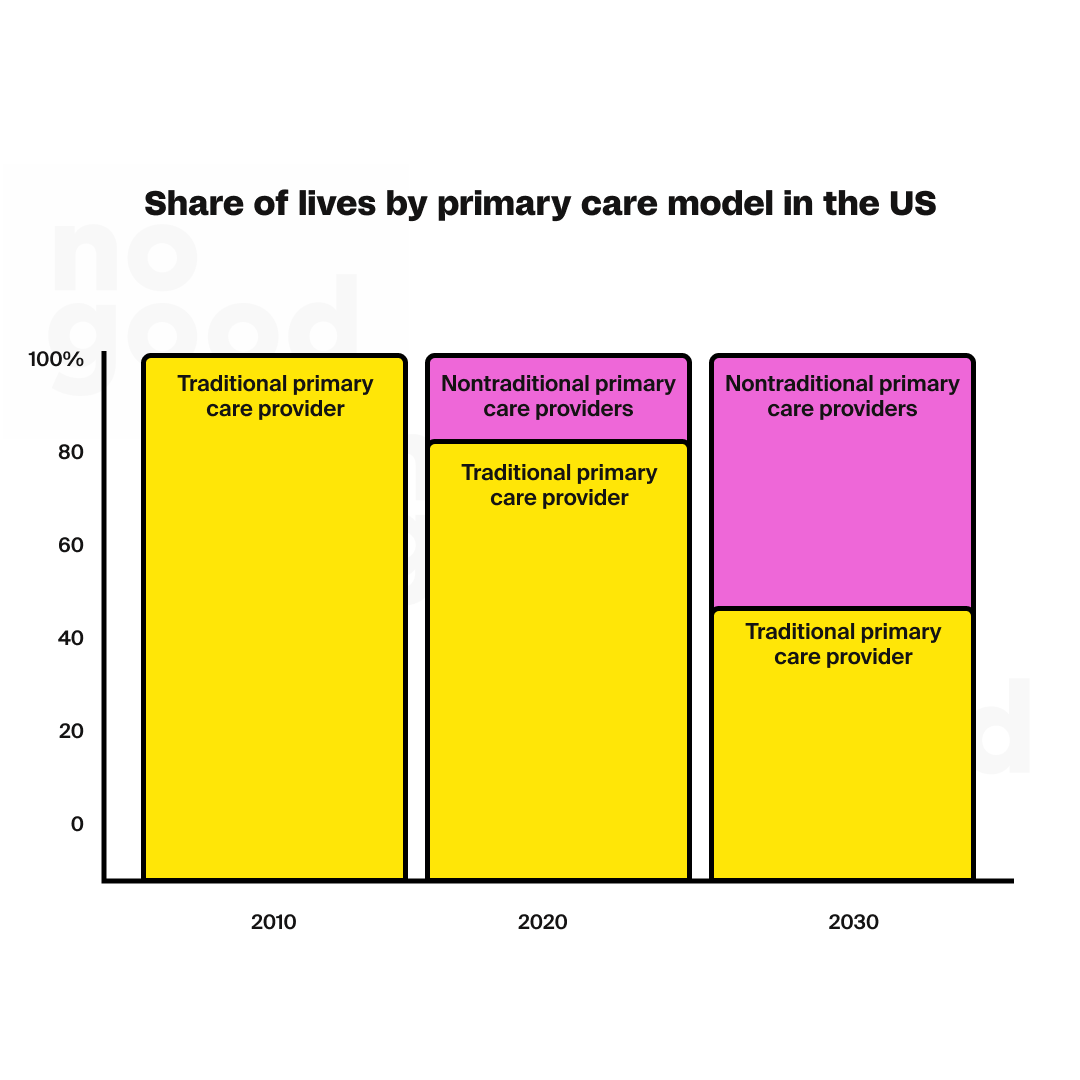
The Top Healthcare Disruptors 2023
1. Innovative Business Models
2. Value-Based Care and Care Management
3. Personalization of Health Services
4. Preventative Health Services
5. Disintermediation
6. Health Data Analytics
7. Consumerization
The healthcare industry is ripe for disruption, with new technologies and business models emerging every day. As we enter 2023, the healthcare landscape is set to continue to rapidly evolve due to disruptive innovations and changes in consumer preferences. A number of innovative companies are poised to continue driving the shift.
In this article, we will explore the top healthcare disruptors of 2023 and examine what sets them apart from traditional healthcare providers. Primary care providers like One Medical, genetic testing disruptors like Illumina, mental health disruptors like Spring Health, direct-to-consumer pharmacies like Cost Plus, health insurance providers like Oscar Health, and telemedicine providers like Hims & Hers and Ro are shaking up the industry with a new approach to products and services.
According to Global Industry Analysts, the global private healthcare market is expected to reach $11.3 trillion by 2030, with the rise of healthcare disruptors playing a major role in this growth.
Innovative Business Models
The traditional fee-for-service business model is no longer the only feasible option, as healthcare disruptors explore and iterate on alternative business models that focus on value and outcomes rather than volume. Historically, the traditional model pays providers for each service or procedure performed, regardless of patient outcome. Alternative models such as capitation or bundled payments incentivize providers to prioritize patient outcomes over the volume of services. For example, One Medical is a primary care provider that uses a membership-based business model to offer patients unlimited access to their services.
Value-Based Care and Care Management
Value-based care models prioritize patient outcomes over profits, focusing on preventative care, chronic disease management, and care coordination across providers. Care managing involves proactive outreach and support to patients with chronic conditions, which is a key component to successful value-based care. This approach rewards healthcare providers for delivering quality care and keeping patients healthy, while reducing costs by preventing hospital readmissions. When patients with chronic conditions are not properly managed, they are more likely to experience complications and require hospitalization, which can be costly for both the patient and the healthcare system as a whole.
Ro is a healthcare disruptor that uses a value-based care service system. By offering virtual care services and data analytics to identify high-risk patients who could benefit from proactive care management, their technology and continuous access to health services from a team of healthcare providers helps patients manage chronic conditions and prevent hospital readmissions.
Personalization of Health Services
Personalized medicine is rapidly gaining popularity, with companies like Illumina leading the charge. Illumina offers genetic testing and analysis to help doctors make informed treatment decisions by using a patient’s unique genetic information to tailor their care plan. Advancements in technology and data analytics allow healthcare providers to personalize treatment plans and interventions for individual patients, ultimately improving patient outcomes and satisfaction.
Preventative Health Services
Preventative health services are becoming increasingly important as healthcare costs continue to rise and providers look for ways to keep patients healthy and reduce the risk of chronic conditions developing. Reducing friction for patients by creating easier and more convenient ways to stay healthy help reduce the overall burden on the healthcare system. Companies like Ro offer preventative health services such as smoking cessation programs, weight loss programs, and sexual health services, making it easier for patients to take control of their health.
Disintermediation
Disintermediation is the process of removing intermediaries from the supply chain in order to improve efficiency. In healthcare, this means removing intermediaries such as insurance companies or pharmacy benefit managers to create a more streamlined system with economic efficiencies. For example, Mark Cuban’s Cost Plus Drug Company is using disintermediation to provide affordable prescription drugs directly to consumers, demonstrating how healthcare disruptors are finding new ways to improve accessibility and affordability.
Health Data Analytics
Health data analytics involves the use of data to improve healthcare outcomes and reduce costs. This process involves collecting, analyzing, and leveraging health-related data to optimize healthcare operations. Examples of data collected include clinical data (patient diagnoses, lab results, medications list), claims data (information about the cost associated with services), demographic data (such as patient age, gender, race, or ethnicity), social determinants of health (income, education, housing), wearable data (such as heart rate and activity level), and genomic data (such as genetic variations and disease risks). Leveraging health data allows healthcare disruptors to identify patterns and make informed decisions about patient care.
New technology can enable health analytic data to expand on traditional services; for example, one innovative use of health data analytics is the use of full-body MRI scans to detect and diagnose disease at an early stage. MRIs allow for detailed images of the entire body, allowing providers visibility to detect and diagnose diseases that may not be readily available with other types of imaging studies.
For example, Spring Health uses data analytics to help employers manage their employees’ mental health. Through analyzing data, Spring Health is able to identify potential mental health issues before they become more serious, intervening to improve employee health and productivity.
Consumerization
Consumerization of health services refers to the trend of providing healthcare services and products directly to consumers, bypassing traditional channels such as hospitals, clinics, or health insurance providers. Direct-to-consumer business models work by allowing consumers to access health services without the need for a referral from their primary care physician. This can include online consultation with doctors, home delivery of prescription medications, and at-home lab testing kits. Patients are able to take better control of their healthcare decisions and find services that are convenient, affordable, and personalized.
Consumerization can contribute to accessibility by removing barriers to healthcare, such as the need for transportation or long wait times to see a healthcare provider. This is especially important for underserved populations, including those who reside in rural areas or those without adequate health insurance.
Many healthcare disruptors have emerged with DTC models, including Hims & Hers, Ro, and Oscar Health Insurance. By leveraging digital technology and marketing to consumers directly, these companies have been able to appeal to a younger, tech-savvy audience.
What Are Current Examples of Disruptive Innovation in Healthcare and Care Delivery?
1. Telemedicine
2. Wearable Tech
3. Precision Medicine
4. Artificial Intelligence
5. Blockchain
Telemedicine
Telemedicine is a rapidly-growing offering that uses technology to provide remote medical care. Patients can access medical consultations, appointments, and even diagnoses online through virtual chats without leaving their homes. One example of a health organization leveraging telemedicine is Spring Health, a mental health platform that offers virtual therapy sessions and online psychiatric evaluations. This allows patients to access mental health services from the comfort of their own homes, reducing barriers to care and improving access to mental health services.
As of July 2022, more than half of U.S. consumers – an estimated 136 million patients – were engaging with their healthcare provider digitally, using a combination of patient portals, tele-health appointments, and mobile apps.
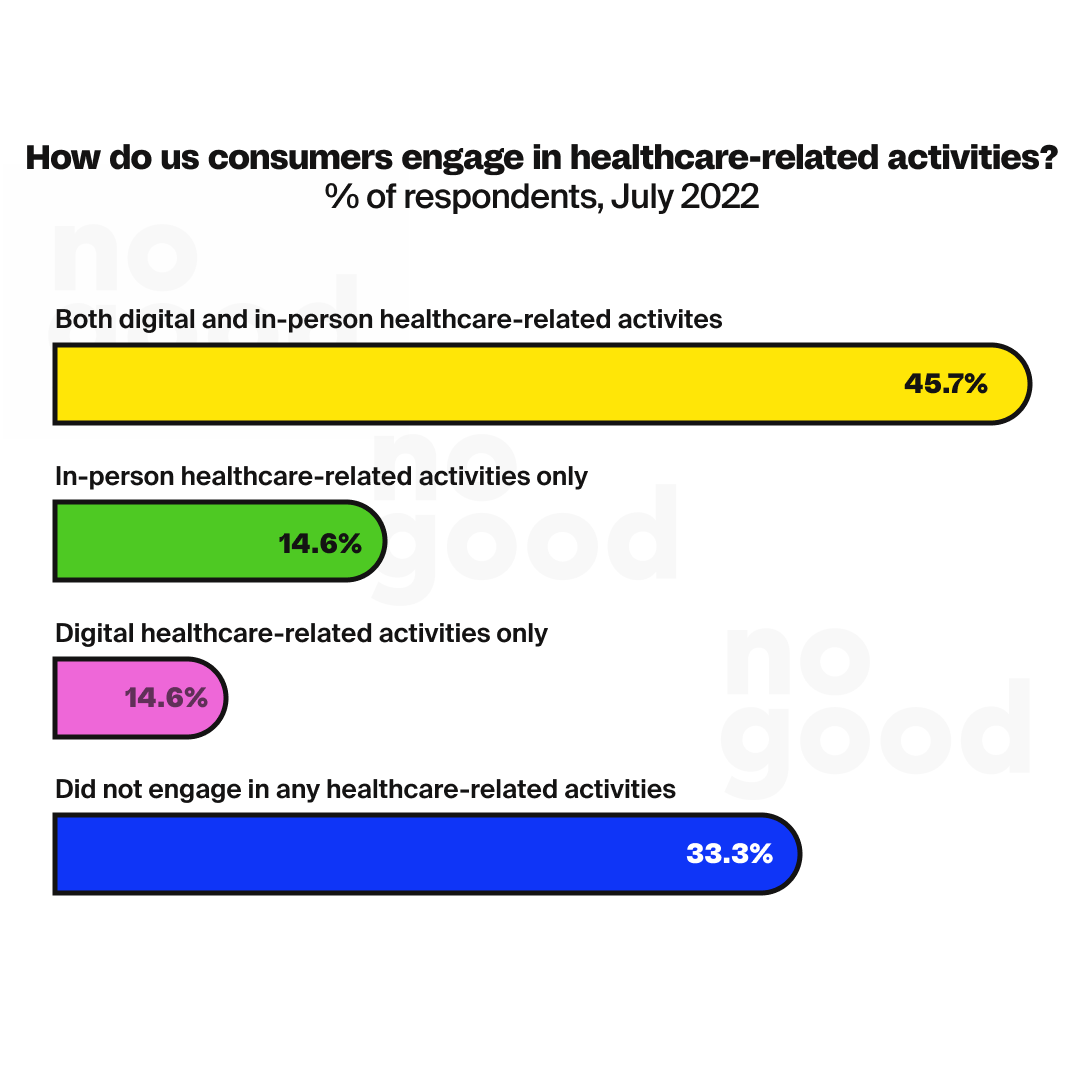
Wearable tech
Wearable technology is another disruptive innovation in healthcare. Wearables are electronic devices that can be worn on the body, either as an accessory or as part of clothing. Wearable devices have become increasingly popular in recent years as they can track a variety of health metrics – such as heart rate, sleep patterns, and activity levels – and provide real-time feedback to users. Devices such as smartwatches and fitness trackers are equipped with sensors and technology that may allow them to monitor health markers such as blood pressure, body temperature, and vital signs including arrhythmia and respiratory problems.
Providers may use wearable data to track patients’ progress toward health goals and identify potential concerns before they become serious. For example, if a patient is using a wearable to track their blood glucose levels, the provider can incorporate this data into their electronic health records (EHRs) to make more informed decisions about medical dosage or other treatment options.
Precision Medicine
Precision medicine involves tailoring medical treatment to an individual’s environment, lifestyle factors, or specific genetic makeup. This variable approach can help providers deliver targeted and individualized treatment plans. Healthcare disruptors have been quick to embrace precision medicine as a way to provide more effective and efficient care.
For instance, Illumina has developed a comprehensive suite of tools and services including genetic testing to identify specific gene variants that are linked to certain diseases and conditions, as well as data analysis tools to help healthcare providers interpret the information to develop personalized treatment plans. Illumina’s technology has been used to identify gene mutations that cause cancer and to develop targeted treatments for those mutations. This approach to precision medicine has the potential to revolutionize cancer treatment by delivering personalized, targeted therapies.
Artificial intelligence
Artificial Intelligence is being used by healthcare disruptors to bring new levels of efficiency, accuracy, and personalization to the healthcare industry. AI is a branch of computer science that involves creating intelligent machines that can perform tasks that typically require human cognition, such as learning, reasoning, and problem-solving.
AI can be used to analyze large datasets of patient data in real time, helping clinicians to identify trends and patterns that may escape detection otherwise, enabling healthcare providers to make faster, more accurate diagnoses. Additionally, AI-based solutions and automations can help reduce the burden of labor-intensive tasks that plague the health care system. From administrative tasks like verifying insurance eligibility and benefits, processing claims, or scheduling operating room procedures, AI can address current inefficiencies that impact care delivery.
Blockchain
Blockchain is a decentralized, digital ledger that records transactions in a secure and transparent manner. It consists of a series of digital blocks linked together in a chronological and immutable chain using cryptographic techniques, creating a permanent and tamper-proof record of transactions. Blockchain technology is used in a variety of industries, including by some healthcare disruptors, to ensure secure and transparent record-keeping and data sharing.
Cost Plus Drug Co. has been actively exploring and implementing blockchain solutions for the last 5 years in order to allow the company to track and verify the authenticity of drugs, ensuring they are not counterfeit or expired. Additionally, Cost Plus Drug Co. is utilizing blockchain-based healthcare solutions to provide patients with easy access to healthcare services while ensuring user data is secure and private.
What Tech Companies Are Disrupting Healthcare?
1. Spring Health
2. Hims & Hers Health
3. Illumina
4. One Medical
5. Cost Plus Drug Co.
6. RO
7. Oscar Health Insurance
Spring Health

Spring Health is a healthcare technology company and industry disruptor founded in 2016 that aims to make mental healthcare accessible by eliminating barriers to care. Spring Health’s mission is to provide comprehensive mental health services to employees. The startup has raised $295 million in funding and serves over 800 companies, from startups to Fortune 500 corporations, and services companies like General Mills, Docusign, and Instacart.
Spring Health uses machine learning algorithms in order to analyze an individual’s needs and develop personalized treatment plans for care, including coaching, meditation, therapy, or medication. By analyzing a patient’s medical history, behavioral patterns, and other data, Spring Health can identify the most effective treatment option for that patient, leading to better outcomes and improved quality of life.
Hims & Hers Health

Hims & Hers is an end-to-end telehealth company that connects individuals to licensed clinicians through virtual consultations on their website or through their smartphone app. Founded in 2017, the platform offers a variety of health and wellness products and services, primarily focused on primary care, sexual health, and dermatology. The company’s mission is to provide easy, convenient, and affordable access to personalized health care.
Hims & Hers uses disintermediation and consumerization by using a direct-to-consumer model, which allows customers to access healthcare products and services without having to go through a traditional healthcare provider. Prescriptions can be filled and shipped directly to the patient’s home. In addition, Hims & Hers collects data on patient preferences and behavior, using a data-driven approach to healthcare.
Illumina

Illumina is a biotech company dedicated to improving human health through DNA sequencing and array-based technologies. Founded in 1998, Illumina provides products and services to academic institutions, biotechnology and pharmaceutical companies, and clinical research organizations to support the research, development, and commercialization of genomic solutions. The company’s flagship product, the NovaSeq sequencing system, can sequence an entire human genome in just one day at a fraction of the price of earlier technologies. Illumina’s technology has been used clinically in noninvasive prenatal testing and cancer diagnostics.
By leveraging genomic analysis and data analytics, Illumina helps healthcare providers offer more personalized and preventative care to patients. For example, their technology enables healthcare providers to identify and target specific genetic markers that can indicate a patient’s elevated risk for certain diseases or inform treatment options, such as genomic profiling to help inform cancer treatment decisions.
One Medical

One Medical is a primary care organization with the vision of providing comprehensive and high-quality healthcare services that are accessible, affordable, and convenient. Founded in 2007, their mission is to transform healthcare through a human-centered, technology-powered model. One Medical offers a personalized approach to healthcare through longer appointment times, same-day or next-day appointments, and a patient-centered approach to care that prioritizes the patient’s needs and preferences. By employing value-based care, One Medical is able to improve patient outcomes and reduce healthcare costs.
One Medical disrupts the healthcare industry through its innovative business model, which operates on a membership-based approach where patients pay a yearly fee for unlimited access to its services. This allows One Medical to offer longer appointment times and more personalized care without relying on insurance reimbursements.
Cost Plus Drug Co.

Cost Plus Drug Company, spearheaded by billionaire entrepreneur Mark Cuban, is a public-benefit corporation seeking to change the way the pharmaceutical industry operates. The company is driven by the mission of improving public health through affordable pharmacy distribution of prescription medications through a direct-to-consumer model.
Founded in 2021, Cost Plus Drug Company focuses on providing medications at the lowest possible price by challenging the traditional pharmacy business model. Eliminating intermediaries such as insurance companies, pharmacy benefit managers, and wholesalers, the company works directly with drug manufacturers to purchase drugs in bulk at a low cost, and then sell the medications to patients with a modest markup and radical pricing transparency.
Ro

Ro is a direct-to-consumer healthcare company providing telemedicine, in-home care, diagnostics, labs, and pharmacy services nationwide. The company’s mission is to offer more convenient, accessible, and affordable healthcare services through its vertically-integrated platform. Ro offers a broad range of medical services including clinics for smoking cessation and weight management.
Oscar Health Insurance
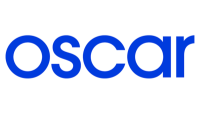
Oscar Health Insurance is a technology-focused health insurance company offering individual, family plans, and small-group health insurance plans for businesses. The company’s mission is to make health insurance more accessible, affordable, and customer-friendly through the use of technology and data analytics. Customers have access to a telemedicine platform that allows members to connect with doctors online or through their mobile app, as well as added features such as a health concierge team that assists members with navigating the healthcare system.
Oscar Health Insurance uses data analytics to better understand its member’s healthcare needs and provide more personalized care. Their machine learning identifies data patterns to identify and predict which members are at increased risk for certain conditions, allowing them to intervene early and decrease costly health issues later on. Oscar takes a customer-centric approach through a user-friendly platform that simplifies information about their users’ coverage, claims, and benefits.
What Qualities Do Healthcare Disruptors Share?
1. Customer-Centric Focus
2. Innovation and Creativity
3. Agility & Adaptability
4. Data-Driven Decision-Making
Customer-Centric Focus
One of the key qualities that healthcare disruptors share is their customer-centric focus and dedication to improving the customer experience. Healthcare disruptors acknowledge the frustration that individuals can feel with traditional health systems and understand their patients are not just consumers of healthcare services, but people. As a result, they constantly look for new ways to engage patients, deliver personalized care, and make their experiences seamless and convenient. This consumer-centric focus also allows disruptive brands to clearly communicate and articulate their value proposition to customers, highlighting the unique benefits and advantages of their service over traditional health systems.
Innovation and Creativity
Healthcare disruptors are not afraid to challenge the status quo, take risks, and experiment with new models of care delivery. They often leverage new technologies, data, and AI to identify trends and insights that lead to an improved user experience and better patient outcomes. Many healthcare disruptors have unconventional business models through disintermediation and direct-to-consumer plans or annual memberships.
Agility & Adaptability
Another key quality of health care disruption is they tend to be agile and adaptable. These startups pivot quickly, adjust strategies, and respond to changes in the market or regulatory environment. They are not burdened by as many bureaucratic processes or outdated business models, which allows them to quickly iterate their products and services based on customer feedback and market demand. For example, Hims & Hers began as a telehealth company for men’s health but has since expanded to offering women’s health, mental health, dermatological, and primary care services.
Data-Driven Decision-Making
Data is at the heart of healthcare disruption. Leveraging analytics strategically drives decision-making, improves outcomes, and reduces costs. Many healthcare disruptors collect from a variety of sources including electronic health records, patient social determinants, operational efficiency, and financial performance. For example, One Medical collects data on appointment scheduling and wait times in order to improve clinic efficiency and patient satisfaction.
How Do Healthcare Disruptors Approach Branding and Marketing?
In 2023, healthcare disruptors approach branding and marketing very differently from traditional health organizations. They prioritize creating a brand image that is customer-centric and relatable to their target audience, often leveraging transparency as a key element of their branding as they are more straightforward about their business model, pricing, and services which creates trust with consumers. To create messaging that resonates with their audiences, they also rely on rapid iteration of creative and data-driven marketing decisions. They leverage storytelling and perceived authenticity to deliver the message through paid advertising and community engagement through social media platforms.
In recent years, users on platforms like Instagram and TikTok have played a significant role in the de-stigmatization of mental health conditions by sharing their personal stories and experiences with health challenges openly and candidly. This has helped to create a more accepting, supportive, and safer environment for those struggling with similar medical conditions. In particular, the ongoing de-stigmatization of mental health struggles has meant that marketing efforts are often more focused on creating a community and safe space for people to discuss their issues, concerns, and treatments. As a result, healthcare disruptors often use social media platforms to share personal stories of those who have successfully received treatment, integrating user-generated content and testimonials that highlight specific benefits to build credibility with potential customers.
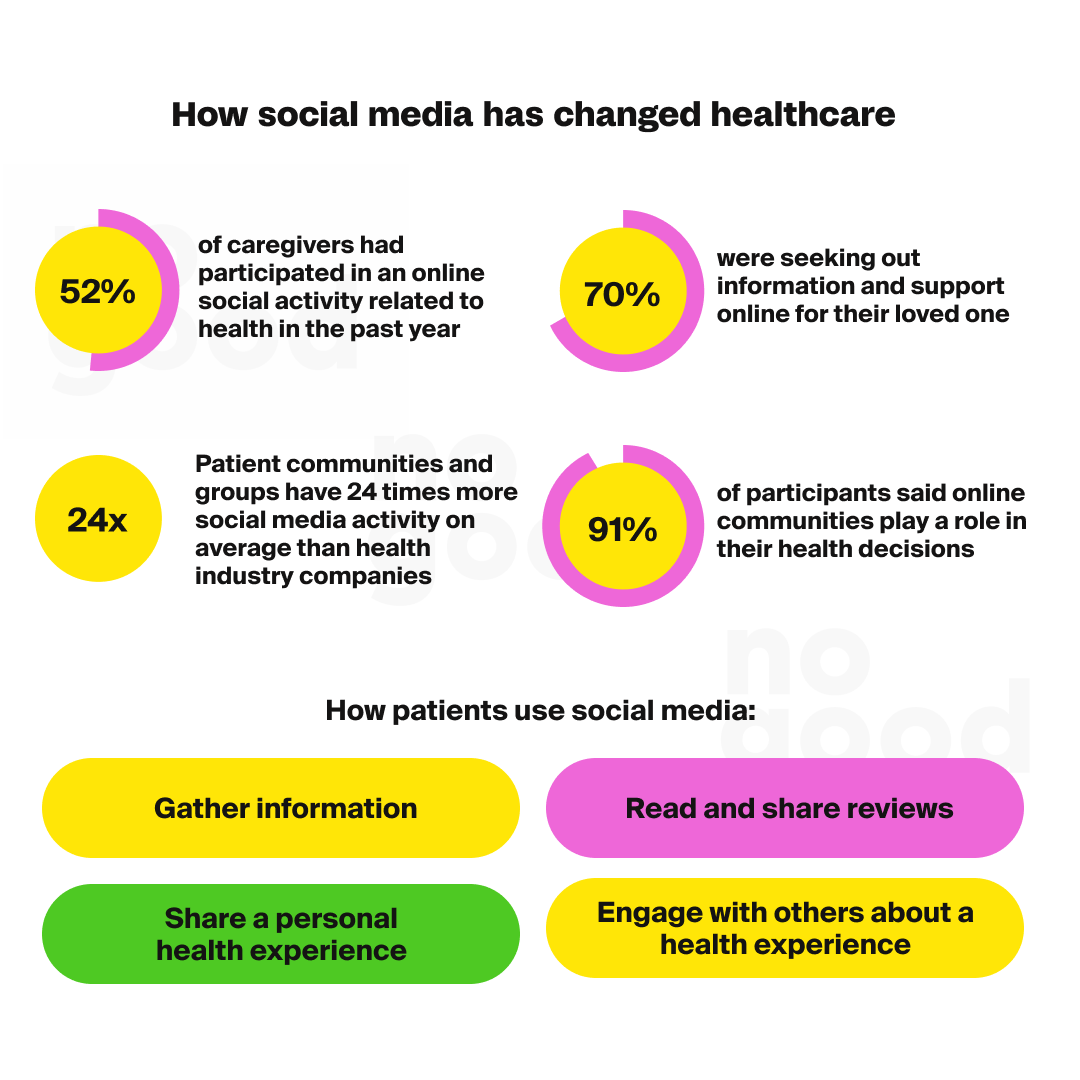
Branding & Messaging Strategy
Healthcare disruptors have been successful in differentiating themselves from traditional healthcare providers by leveraging a brand messaging strategy that emphasizes story-telling, authenticity, and transparency. By sharing stories that connect with their target audience on an emotional level, disruptors have been able to create a stronger connection and build trust with consumers.
Hims & Hers is one example of a company that has successfully leveraged story-telling and authenticity to create a powerful brand message. In a video ad titled Depression, a patient is featured describing her experience with depression and what it feels like in her own words: “a never-ending day”. The woman explains her decision to prioritize her mental health by seeking treatment and ultimately medication. She describes the benefits of Hims & Hers making it easy, financially accessible, and safe for women to seek treatment. The nearly 2-minute video ad is filmed documentary-style, giving viewers a sense of genuineness and vulnerability. By sharing these stories, the company is able to destigmatize issues its target audience may be struggling with, elicit empathy, and create understanding of the solution they offer while connecting with the audience on an emotional level.
In a similar vein, Oscar Health uses humor to create authenticity and relatable messaging that resonates with consumers. One ad reads: “Health insurance sucks. But at least we’re making it suck less.” By acknowledging the common pain points associated with the health insurance industry such as confusing policies and high costs, Oscar is able to differentiate itself from other insurance providers and create a more consumer-centric experience.
Organic Strategy
Organic marketing strategies are a vital tool in the arsenal of healthcare disruptors. These companies use various tactics to reach their ideal customers without relying on paid advertising.
One of the primary methods is Search Engine Optimization to increase the visibility and ranking of a website on search engines such as Google. By optimizing the content and structure of their websites, healthcare disruptors can improve their search engine rankings and drive more organic traffic to their site. In addition to SEO, healthcare disruptors also use Public Relations campaigns to gain media coverage and earn features in various news outlets. This can help increase brand awareness and credibility, as well as attract new customers who are interested in learning more about the company and its products and services.
Social media platforms like Instagram, Facebook, TikTok, LinkedIn, YouTube, and Twitter are also essential components of healthcare disruptor’s organic marketing strategies. These platforms allow companies to engage with their target audience, share valuable content, and build brand awareness. By creating high-quality content such as blogs, articles, infographics, webinars, and educational videos, healthcare disruptors can leverage content marketing to educate their audience on the benefits of their service and establish themselves as thought leaders in the industry.
Community-building and community engagement efforts are also becoming increasingly important for healthcare disruptors. Brands and marketers are seeing increased performance from these efforts, particularly when targeting ad-adverse Gen-Z. Interacting with content drives brand awareness and affinity without users feeling they are being sold or marketed to. For instance, One Medical’s TikTok account features a mix of content that is trending or educational, including a 1-minute vertical video featuring a registered medical professional with the title “What is Intuitive Eating?” overlaid. In the clip, the PA-c speaks directly to the camera about what intuitive eating is, how it relates to better well-being, and 3 tips to practice it. The video ends without a CTA, but the company’s brand and message are effectively communicated.
In a different approach, Mark Cuban’s Cost Plus Drug Co has served over 2 million customers within its first year of business as an online pharmacy. To date, the company hasn’t spent any money on paid media advertising, instead relying on frequent press coverage, solid product-market fit, and word-of-mouth referrals from happy customers who have saved significantly with discounted medication.
Paid Media Strategy
As new entrants in a competitive industry, healthcare disruptors need to build brand awareness and acquire new customers quickly. Paid media can help brands achieve their goals by providing them with the tools and platforms to reach their key audiences and create a measurable impact. Performance marketing enables healthcare disruptors to target specific audiences more effectively, resulting in a higher ROI on their marketing spend.
One Medical, for example, took the TikTok video described above and cross-posted it to other platforms, then amplified the content’s reach by using it as a Meta paid ad. By doing so, One Medical is able to generate additional reach, consumer engagement, and consideration. One Medical rounds out its social media strategy with other digital channels, including display and search ads, occasionally integrating more traditional placements on TV and Out-Of-Home transit ads into new campaign launches for a holistic approach.


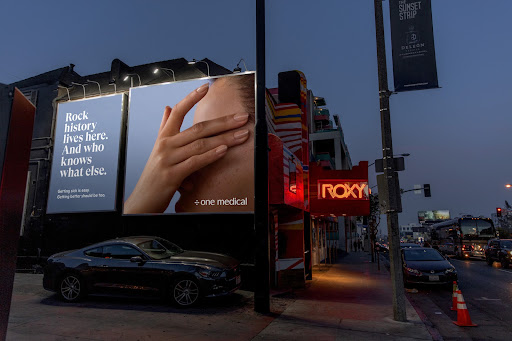

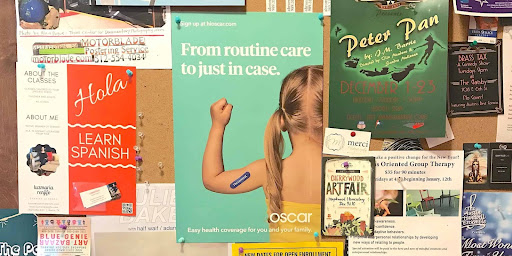



Studies show that up to 92% of consumers trust influencer recommendations over traditional advertising and those consumers are more likely to make a purchase based on social media references. Hims & Hers has grown its influencer marketing program into a sustained evergreen strategy where influencers serve as ambassadors and voices for the brand in order to successfully connect with their target audience. According to Bette Ann Fialkov, Head of Entertainment & Culture at Hims & Hers, the key to finding good influencer partners is looking beyond follower size, engagement rates, or audience demographics and finding influencers who are truly aligned with the brand’s shared values and goals. This is especially important for maintaining a high level of authenticity. In practice, Hims & Hers launched a campaign for their minoxidil hair loss treatment and wanted to promote their product while de-stigmatizing the conversation around hair loss. After their internal team discovered that Jennifer Lopez had experienced hair loss, they were able to partner with her and bring to life an impactful and authentic story, which was distributed and amplified through paid channels including Meta and Hulu.
One creative approach to advertising taken by Oscar Health was an outdoor campaign in several cities across the U.S. with small eye-catching posters and stickers, reminiscent of street art, driving open enrollment sign-ups. The posters, both in Spanish and English, were placed throughout neighborhoods, in laundromats, convenience stores, and other areas of the street in order to connect with their target audience. This guerrilla-marketing style play is an atypical strategy for health insurance companies, and combined with a robust traditional outdoor campaign, resulting in more than 10MM impressions for Oscar Health’s open enrollment.
In addition to these tactics, healthcare disruptors are exploring new advertising formats and platforms such as podcasts and streaming services. By advertising on podcasts, brands can reach engaged and loyal listeners. Streaming services like Hulu and Spotify allow brands to reach consumers in a more targeted way than traditional broadcast mediums.
Tips for Healthcare Disruptors Looking to Improve Their Growth Strategy
The healthcare industry is going through massive transformation driven by a wave of disruptive innovation. In recent years, a new breed of healthcare disruptors have emerged, changing the way that healthcare is delivered, accessed, and experienced. These disruptors are leveraging new business models and technology to improve patient outcomes, increase access, and provide personalized, accessible, and affordable healthcare services.
As the healthcare industry is constantly evolving, healthcare disruptors must stay ahead of the curve through innovation, adaptability, data-driven decision-making, and a customer-centric ethos. In order to be successful, these newcomers must develop a unique brand identity, curate a strong go-to-market strategy, create compelling messaging and content to resonate with their target audience, and leverage the right blend of organic and paid marketing channels and strategies to reach, connect, and acquire new customers.
Performance marketing is a data-driven approach that focuses on driving measurable results and allows healthcare disruptors to build brand awareness, generate leads, acquire new customers, and drive revenue growth. By measuring and optimizing their advertising campaigns, companies can ensure they are getting the best return on their marketing dollars.
Healthcare disruptors can build affinity around their brand by creating connections with their patients in online communities where conversations are happening organically. Strong content and community initiatives build trust with a brand and drive loyalty. Additionally, storytelling is a powerful tool for healthcare disruptors to differentiate themselves and create an emotional connection with their audience. Through storytelling, companies can create a sense of purpose and inspiration.
Future Predictions for Impacts on the Industry
The healthcare industry is undergoing significant transformation that is revolutionizing the way healthcare is and will be delivered. As the industry continues to evolve, we can expect to see even more disruption and innovation, with new players entering the market and existing players pivoting to keep up with the changing landscape. To succeed in this dynamic and competitive environment, companies must prioritize innovation and a willingness to adapt and evolve.
In the next decade, it is likely that telemedicine and virtual care will become even more prevalent as consumers continue to flock toward convenient and accessible healthcare options. More medical consultations and appointments will be done through online video conferencing, and remote monitoring of patients with chronic conditions will become more common. Wearable technology will improve in accuracy and prevalence, and wearables and other health-tracking devices will become increasingly integrated with health systems. Artificial Intelligence and machine learning will play a larger role in diagnosing and treating diseases, as well as predicting which patients are at a higher risk of certain conditions. Process automation will be used to streamline administrative tasks and improve operational efficiency. Precision medicine will become more widespread as genetic testing and personalized treatments become more affordable and available. Augmented reality and virtual reality technologies will be used increasingly in healthcare for education, training, and treatment purposes. 3D printing technology may be widely used to create customized implants and prosthetics.
As the healthcare industry continues to evolve and adopt new technologies, brands and marketers will need to adapt their strategies to stay compliant with privacy and regulatory limits. Marketers will leverage persona-specific messaging and media mix strategies while delivering targeted ads through demographic and behavioral data. Healthcare marketers will lean into a content-first approach that speaks directly to the needs and concerns of the target audience and establishes their brand as a trusted source of healthcare information. They will also continue to leverage education, storytelling, and community engagement to continue to expand brand awareness, promote new products and services, and build relationships with their audience.
Overall, technology changes in both health care and marketing are leading to a more data-driven, personalized, and targeted approach.






